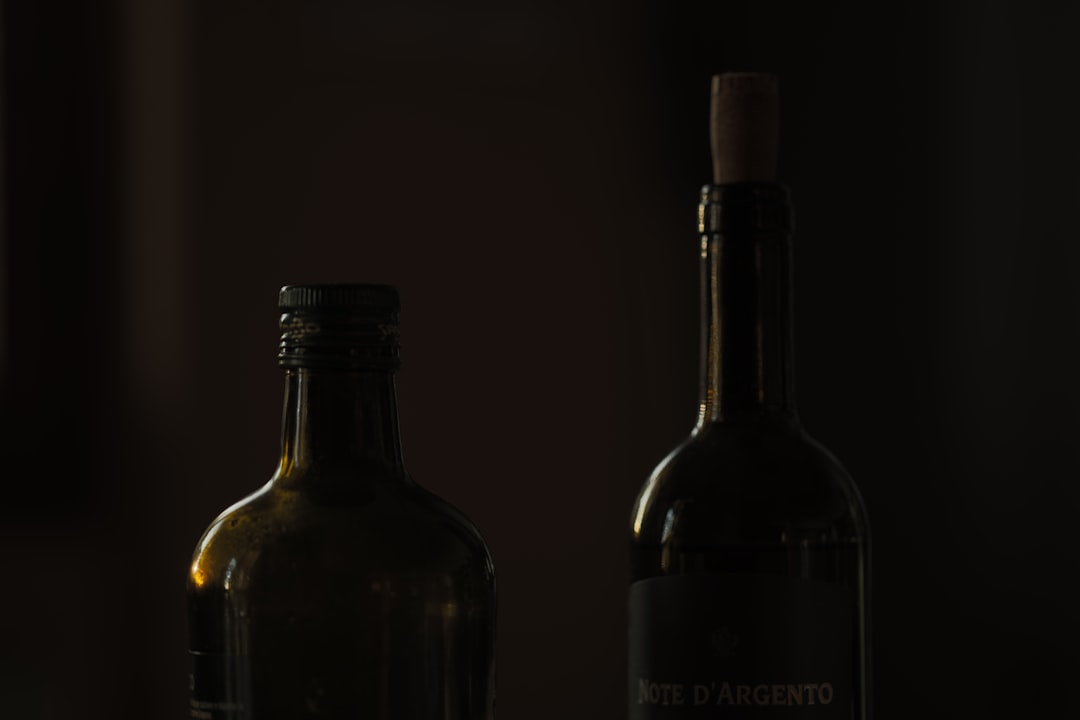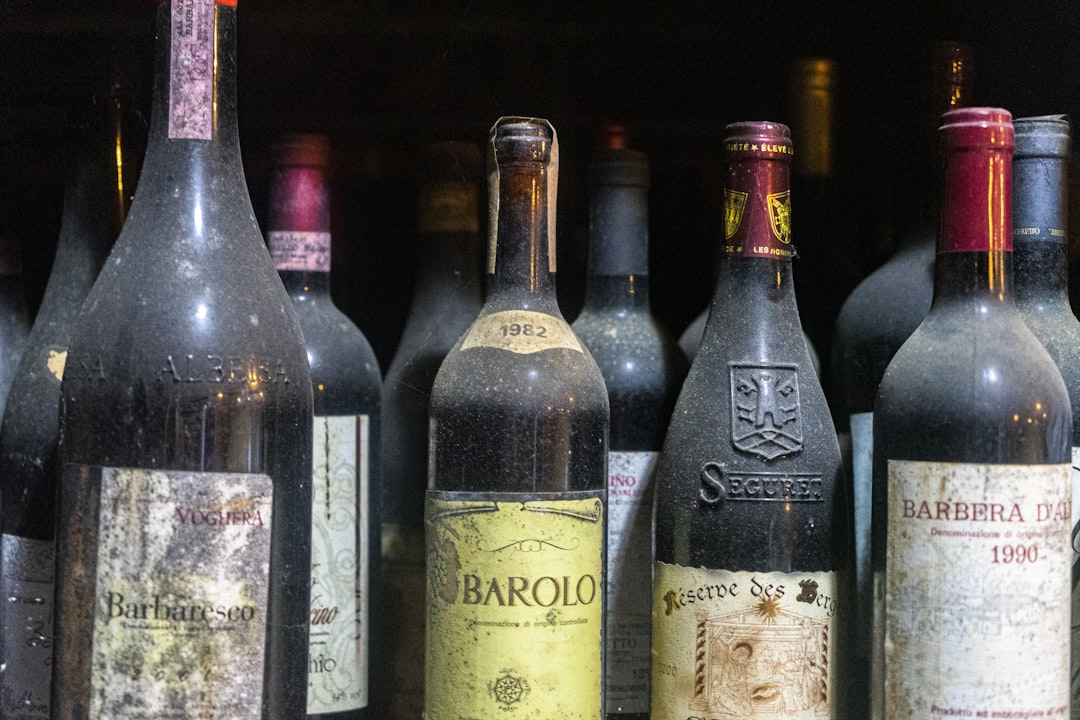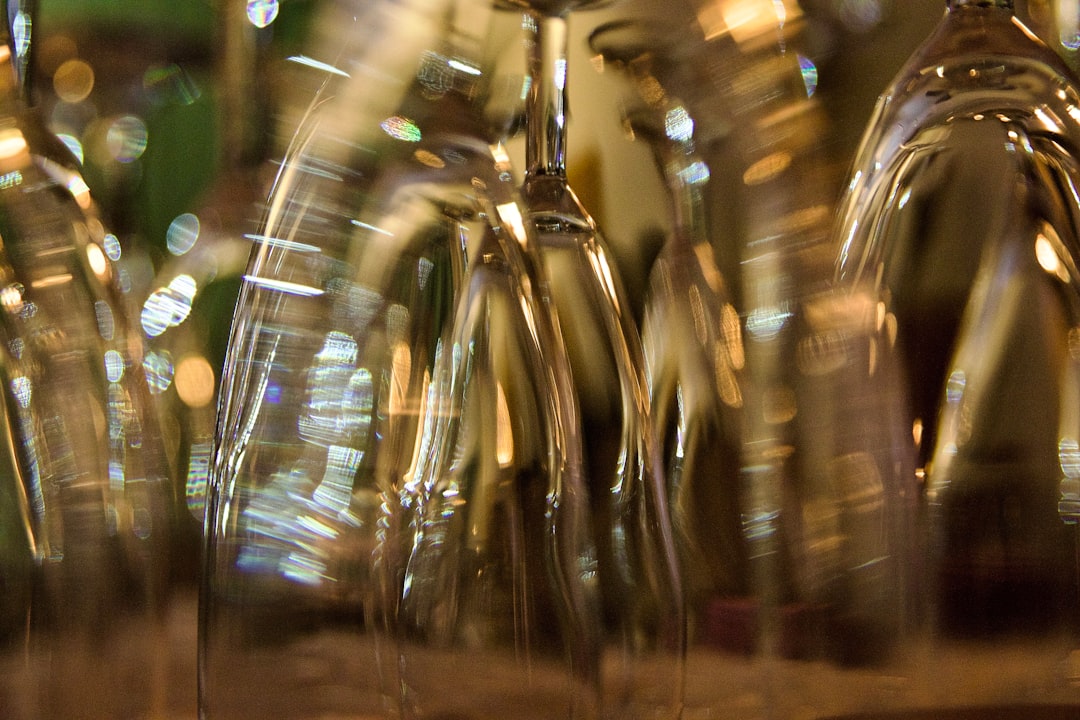

Engage prospects with a scan and streamline customer engagement with FREE QR code marketing tools by Sona – no strings attached!
Create a Free QR CodeFree consultation

No commitment

Engage prospects with a scan and streamline customer engagement with FREE QR code marketing tools by Sona – no strings attached!
Create a Free QR CodeFree consultation

No commitment
Wine tour companies face increasing pressure to stand out and deliver memorable experiences in a saturated market. As wine tourism grows, many operators still depend on traditional tools such as printed brochures or paper forms, only to face data loss and missed opportunities. Disconnected guest journeys and manual processes often result in untracked interest and reduced rates of booking or repeat visits.
QR codes offer a cost-effective bridge for wine tour companies seeking to enhance packaging, elevate branding, and drive measurable results. By transforming every bottle, tour ticket, or promotional piece into a digital gateway, wineries and operators can delight guests, boost bookings, and gather valuable data without disrupting the authentic experience. QR-enabled engagement addresses gaps where prospects might otherwise go untracked or unengaged.
From personalized tasting journeys to exclusive event access and instant reviews, QR-enabled packaging increases operational efficiency and enables a deeper understanding of guest intent. This evolution unlocks new revenue streams and provides actionable analytics, even for companies frustrated by anonymous traffic or low review rates. This article explores how wine tour companies can leverage QR codes to enhance packaging, marketing, and the overall guest experience.

Wine tour companies often struggle to track guest engagement effectively, relying on analog touchpoints such as printed guides or static tasting notes that fail to capture actionable signals and lead to missed prospects. QR-enabled packaging transforms these passive moments into interactive touchpoints that move guests into your digital experience without friction. When every label, neck tag, or tour pass opens a curated microsite or action page, you replace guesswork with real signals and reduce reliance on paper forms or manual follow-up.
The key is to design QR journeys that map to outcomes you can measure. With dynamic QR platforms like Sona QR, operators can test, learn, and refine messages while tracking performance in real time. Packaging becomes a launchpad for booking add-ons, collecting feedback, and delivering multimedia storytelling that deepens brand affinity.
For example, replacing static brochures with QR codes on tasting cards can link guests to short video guides and same-day offers, capturing interactions that previously vanished. Even small operators can automate scan capture with Sona QR, surface top-performing placements, and use those findings to guide future packaging, copy, and incentive design.

Wine tourism thrives on sensory storytelling and human connection, yet many of the most critical revenue moments still occur on paper or in untrackable conversations. QR codes remove friction between interest and action, inviting guests to book, review, or share their preferences in seconds. The result is a more connected journey where every physical asset can trigger a measurable digital outcome.
The appeal is not only convenience. Dynamic QR experiences modernize your marketing stack without erasing the craft and authenticity that guests expect from wineries. Scans yield analytics that inform which varietals, events, or price points trigger the most curiosity. Teams can prioritize high-fit prospects and direct resources to the placements and messages that repeatedly convert.
QR code analytics provide the transparency needed to invest confidently. If your tasting room signage drives 6 percent more upgrades than bottle tags, you can shift creative emphasis or reallocate offers to meet demand while protecting guest experience.

Wine tour operators engage guests across many contexts, from tasting rooms and vineyards to event venues and retail shelves. QR formats should match the action you want and the environment where scanning will occur. A well-chosen format reduces friction and clarifies intent, which improves conversion and data quality.
Dynamic QR codes are especially useful in wine tourism because schedules, inventory, and promotions often change. Static codes still have a place, such as linking to a timeless brand story or a PDF map, but dynamic codes deliver the agility needed to keep printed assets relevant across seasons and events.
Common uses include bookings and feedback collection via web links and forms, upsell offers on bottle packaging, and vCards for concierge partners. With Sona QR, you can generate, manage, and update all formats in one dashboard while maintaining brand consistency.

Most wine tour experiences include dozens of moments where interest sparks but goes untracked. Strategic QR deployment converts each of these micro-moments into measurable actions that build your pipeline. By aligning code placement with intent, you enable helpful interactions while capturing context that fuels smarter marketing.
Think of every physical item a guest touches as a digital onramp. A small code with a strong benefit-driven CTA can turn fleeting curiosity into a booking, a review, or a shareable story that travels far beyond the vineyard. Over time, you will see which placements produce the most revenue and which audiences require different offers or formats.
Unlocking these touchpoints ensures more guests receive timely and relevant follow-up. You will also reduce manual processes during peak seasons since scanning centralizes data capture and guides guests to the next best action.

Well-designed QR programs replace analog friction with instant, actionable steps. They also reveal which offers resonate, which staff prompts work best, and where to concentrate inventory for high-value experiences. The following use cases are common across wine tour environments and can be tailored to brand tone and price point.
Each use case should be tied to a clear destination and metric. When the action is obvious and the reward is immediate, scan rates rise and data quality improves. Sona QR allows you to measure conversion, not just scan volume, so you can refine campaigns for revenue impact.
Start with one or two use cases that directly support your revenue targets. As you learn, expand placements and messages, then standardize the best-performing patterns across your routes and seasons.
Every scan is a behavioral signal. It reveals what a guest wanted in that moment, where they were, and how the physical context influenced their interest. By placing multiple QR codes across your experience, you convert fragmented touchpoints into a structured dataset that fuels precise retargeting and timely follow-up.
Rather than sending generic messages, you can tailor remarketing to the scan context and lifecycle stage. A bottle-scan at home suggests post-visit affinity, while a lanyard-scan at an event implies active consideration. Sona QR captures these distinctions and syncs them to your CRM and ad platforms so you can automate the right next action. See Sona’s retargeting playbook.
With intentional segmentation, you will move beyond impressions to engagement you can act on. Your sales and guest services teams can prioritize outreach to guests showing high intent, while your marketing team continues nurturing those who need more storytelling before booking.
A fragmented guest journey erodes conversion and increases wasted spend. QR codes unify offline and online interactions by providing a consistent bridge from physical media to trackable digital actions. When every printed item routes to a branded destination and a measurable step, you turn your marketing mix into a coordinated funnel. For measurement across offline touchpoints, read Sona’s offline attribution.
The key is to plan your QR strategy across channels rather than bolting it on per asset. Decide which actions matter at each stage, then use consistent CTAs, benefits, and visuals so the experience feels seamless. With Sona QR, you can centralize code creation, enforce design standards, and monitor channel performance in one dashboard.
These integrations make every marketing effort measurable and aligned. You will also reduce the lag between interest and action, which is especially valuable in tourism where timing and seasonality shape demand.
Launching a QR initiative is straightforward when you map each step to a business outcome. The following checklist blends practical design guidance with wine-tour specifics so you can deploy confidently and iterate quickly. Use dynamic codes whenever you need tracking, retargeting, or the flexibility to update destinations without reprints.
Start small, measure, and scale what works. The goal is not to add QR codes everywhere but to position them where they enhance the experience and produce measurable lifts in bookings, reviews, and loyalty.
Clarify the outcome you want before you design any asset. Do you want more weekday bookings, a higher percentage of club sign-ups, or better review volume after peak weekends? Choose a single KPI for your first campaign and align your code placement and incentive to that goal.
Choose static codes for fixed destinations such as a PDF vineyard map or a vintage profile page. Choose dynamic codes for anything that needs tracking, retargeting, or frequent updates, such as booking calendars, seasonal promotions, or club enrollment campaigns.
Treat the QR code as a designed component, not an afterthought. The frame, color, logo, and CTA all influence scan rates. Test in realistic environments to ensure fast recognition under varied lighting and distance.
Place codes where intent is highest and the surrounding copy or imagery primes the action you want. Each deployment context has its own best practices for size, contrast, and scanning distance.
Use analytics to understand which assets and messages drive action. Optimization is continuous, especially across seasons, visitor profiles, and event types.
A disciplined checklist ensures each campaign ladders up to revenue goals. Over time, you will build a library of proven templates for bottle labels, tasting kits, lanyards, and vehicle signage that teams can deploy with confidence.
Attribution is the crux of modern wine tour marketing. Knowing that a scan occurred is helpful, but real value comes from connecting the scan to a booking, club enrollment, or review. Without this connection, you cannot accurately evaluate which placements, offers, and experiences generate the most revenue or loyalty.
Sona QR makes scans measurable, and Sona, an AI-powered marketing platform that unifies identity resolution, data activation, and revenue attribution, extends that visibility across the full journey. Together, they help you see the path from first scan to final purchase, which is especially valuable when guests engage on multiple channels before choosing a package or returning for a second visit.
By operationalizing this loop, you can prioritize high-performing placements, retire ineffective collateral, and refine offers to match demand patterns by season, daypart, or audience.
Scaling QR success is about consistency, clarity, and integration. When each code is unique to its placement, tagged for attribution, and connected to automation, campaigns compound over time. Staff education matters as much as design since a well-timed prompt can double scan rates.
Choose the practices that match your environment and workflows. Wineries with heavy group traffic might focus on check-in and dietary capture, while boutique operators might invest in VIP upgrades and club trials. Either way, tie each tactic to a measurable step and an automatic follow-up.
You can generate and track your first QR codes for free with Sona QR. Pick a starter use case, and connect it to your CRM to see how quickly scan data translates into bookings and reviews.
Operators across wine regions are already proving that QR codes can turn physical moments into measurable growth. The most successful programs combine a strong incentive with high-visibility placement and a simple, mobile-first destination. Creativity helps, but clarity is what drives action.
Use these examples to spark ideas that fit your brand and price point. Start with similar placements, then tailor the CTA and content to your story and guests.
These campaigns solved previous pain points such as anonymous traffic, low review volume, and missed upsells. With Sona QR, each scan became a trackable step in a repeatable growth playbook.
QR codes work best when the destination matches the moment and visual clarity makes scanning effortless. Teams should iterate quickly, measure relentlessly, and refine based on the data, not assumptions. A few operational missteps can stall results, but they are easy to avoid with a simple checklist and staff training.
Treat your QR program like a product, where each release is an opportunity to learn. Update content frequently, retire underperformers, and double down on placements that produce revenue and high satisfaction scores.
Gather feedback from staff and guests to fine-tune placements and CTAs. A quick on-floor conversation often reveals obstacles that analytics alone cannot surface.
QR codes have become a strategic bridge for wine tour companies, transforming every physical touchpoint into a digital opportunity to engage, convert, and retain guests. When thoughtfully implemented, QR codes solve industry pain points such as anonymous prospects and missed feedback by connecting in-person experiences to actionable analytics. This approach enhances marketing ROI and delivers a more memorable, tailored guest journey.
By embedding QR codes into packaging and marketing materials, wine tour companies can track, optimize, and grow each stage of their relationship with guests, turning every scan into a driver of long-term loyalty and revenue. If you are ready to start, start creating QR codes for free, add a clear CTA to your highest-traffic asset, and connect it to your CRM. Then measure the lift in bookings and reviews over the next 30 days to validate your playbook and scale with confidence.
QR codes have transformed wine tour companies from simple packaging elements into powerful, interactive marketing tools. By integrating QR codes into your wine tour packaging, you can engage customers with immersive experiences, provide instant access to exclusive content, and gather valuable insights that drive smarter marketing decisions. Imagine knowing exactly which packaging designs inspire bookings and creating personalized journeys that captivate wine enthusiasts at every touchpoint.
With Sona QR, you can easily create dynamic, trackable QR codes that update instantly without the need to reprint labels or brochures. Connect each scan to customer behavior and revenue, enabling you to optimize campaigns and maximize returns effortlessly. Start for free with Sona QR today and turn your wine tour packaging into a seamless gateway for customer acquisition, enhanced experiences, and measurable growth.
Wine tour companies can stand out by using QR codes on packaging and marketing materials to create interactive experiences, track guest engagement, and gather valuable data that drives bookings and repeat visits.
They place QR codes on bottles, tickets, and promotional materials that link to personalized booking pages, virtual tastings, feedback forms, and exclusive offers, enabling guests to easily take actions and allowing companies to track and optimize engagement.
Common QR code formats include web links for bookings and stories, forms for dietary preferences and feedback, vCards for B2B contacts, app downloads for loyalty programs, and dynamic content that can be updated without reprinting.
They can track scan data such as time, location, device, and conversion rates using platforms like Sona QR, set clear KPIs like booking lift or review completion, and analyze which placements and messages perform best to optimize campaigns.
Guided wine tours provide personalized tasting journeys, exclusive event access, easier booking and feedback processes, and a more connected and memorable guest experience enhanced through digital tools like QR codes.
They strategically place QR codes on various touchpoints like tasting kits, event brochures, social media, video ads, direct mail, and signage to unify offline and online interactions, making each marketing channel measurable and driving coordinated guest actions.
Unique experiences include VIP booking access through exclusive QR codes, instant guest reviews via mobile-friendly forms, sustainable wine education with videos and soil maps, and interactive on-tour voting for favorite pairings.
QR codes capture behavioral signals and scan context that can be segmented by guest intent, interest themes, timing, and location, enabling personalized follow-up through CRM and ad platforms for more effective retargeting campaigns.
Companies can use QR codes linked to forms to capture dietary restrictions and preferences during tastings, enabling personalized food pairings and accommodating guest needs while reducing manual processes.
They should match QR code destinations to context, use clear and sufficiently sized codes with strong contrast, train staff to prompt guests to scan at key moments, and regularly update dynamic codes to keep offers accurate and relevant.
Use Sona QR's trackable codes to improve customer acquisition and engagement today.
Create Your FREE Trackable QR Code in SecondsJoin results-focused teams combining Sona Platform automation with advanced Google Ads strategies to scale lead generation

Connect your existing CRM

Free Account Enrichment

No setup fees
No commitment required

Free consultation

Get a custom Google Ads roadmap for your business






Launch campaigns that generate qualified leads in 30 days or less.
